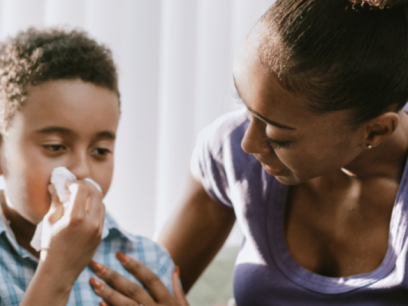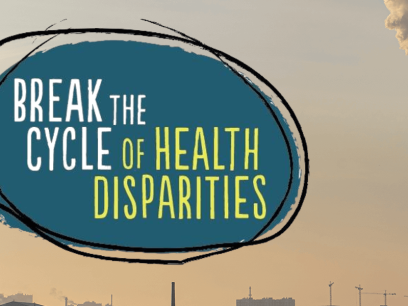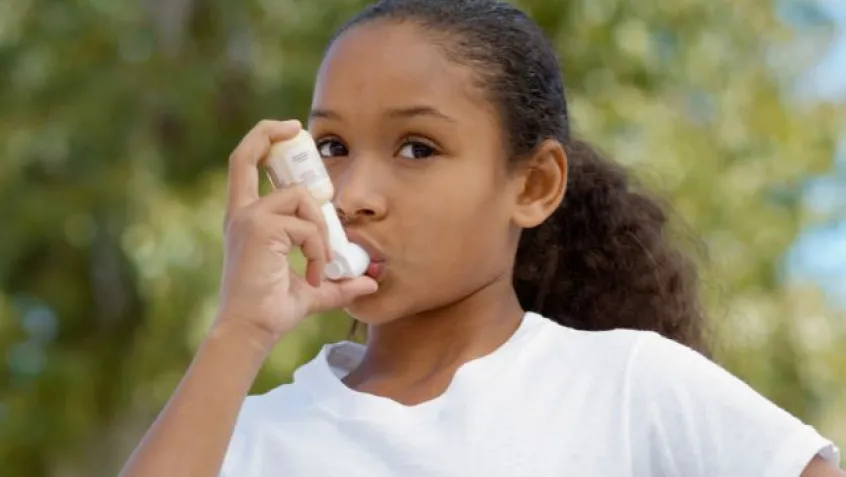
Do you or a loved one struggle with asthma? If so, mark your calendar for the third week of September, when "Asthma Peak Week" hits the United States.
This time of year brings a spike in pediatric hospital stays related to asthma attacks due to an uptick in allergy and asthma triggers, including:
- Ragweed pollen, which blooms in August across the US and sticks around until the first frost.
- Respiratory viruses like the common cold, flu, and COVID-19.
- Indoor allergens, including mold and dust mites.
- Air pollutants such as exhaust from idling school buses or cars in garages.
- Stress and anxiety during the back-to-school season and the return to a busier fall work schedule.
“In early 2020, COVID-19 measures like social distancing, quarantines, and school closures reduced pediatric respiratory illnesses and asthma. However, with the lifting of these restrictions, we anticipate a resurgence of asthma exacerbations following the usual seasonal pattern,” said Anand Gourishankar, MD, a pediatrician at Children’s National Hospital, public health researcher, and NEEF Asthma Faculty Champion.
For over a decade, NEEF has offered free online tools and trained more than 20,000 professionals through its online courses and in-person learning sessions conducted by a network of experienced practicing pediatric physicians.
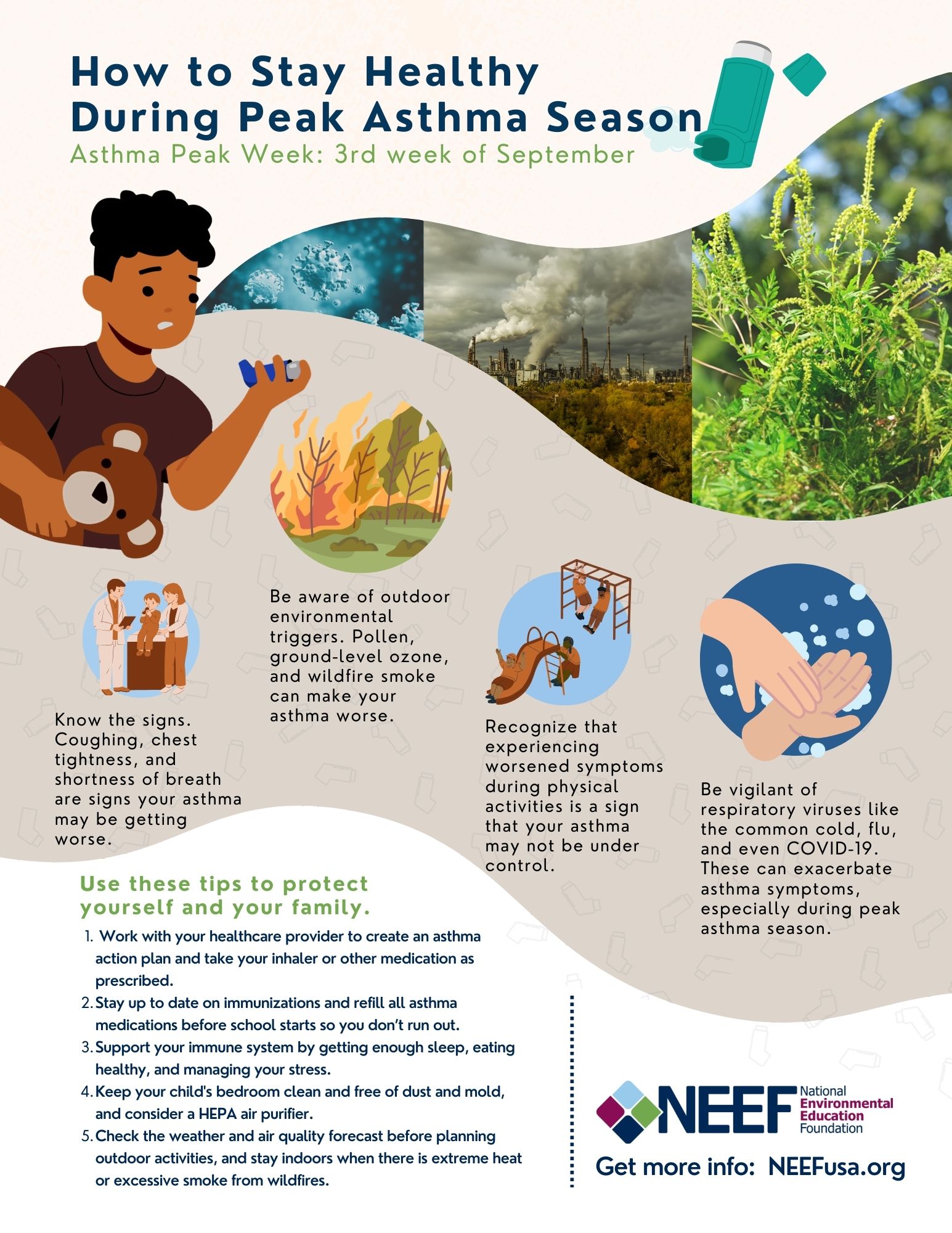
Is Your Asthma Under Control?
As Asthma Peak Week approaches once again, take stock of your symptoms. Unsure if your asthma is under control? Dr. Gourishankar said these are some signs that your asthma may be getting worse:
- You have frequent asthma symptoms, such as coughing, wheezing, chest tightness, or shortness of breath.
- You have to miss work or school because of your asthma.
- Your asthma symptoms get worse during exercise or physical activity.
People who stop taking their controller inhaler during the summer months can especially be at risk of a flare-up in the fall when their lungs are exposed to more allergens again and become inflamed.
“As the seasons change, the week with the most asthma cases in September is both a struggle and an opportunity. As we deal with the rise in lung problems every year, we must remember that we can take charge,” said Dr. Gourishankar. “By being aware of triggers, taking medications as recommended, and prioritizing regular doctor's appointments, we give ourselves the tools to deal with asthma's unpredictable patterns.”
Understanding Asthma Risk Factors
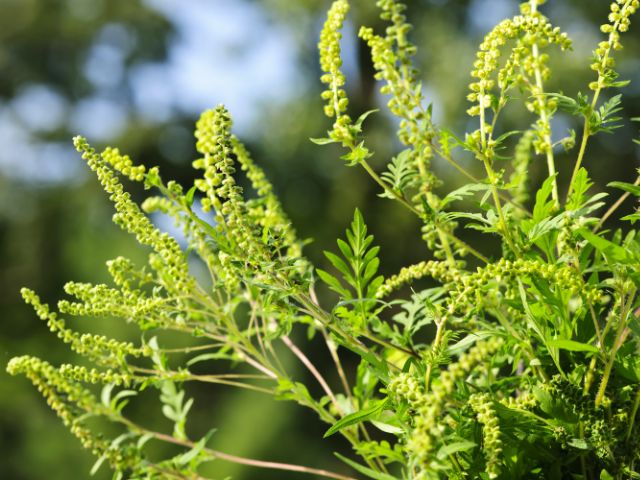
The effects of Asthma Peak Week are felt differently depending on where you live. Factors like climate change have led to increased levels of outdoor environmental asthma triggers such as pollen, ground-level ozone, and wildfire smoke. However, it’s also important to be aware of various indoor environmental triggers that can worsen asthma symptoms, including mold, pests, pet dander, and nitrogen dioxide from gas-burning appliances like stoves or fireplaces.
In 2022, the Asthma and Allergy Foundation of America identified the top five most challenging places in the US to live with asthma based on asthma prevalence, emergency department visits due to asthma, and asthma-related fatalities:
- Detroit, Michigan
- Cleveland, Ohio
- Allentown, Pennsylvania
- Lakeland, Florida
- Fresno, California
Specific risk factors for asthma include:
- Age: Children and young adults experience asthma more often than adults because their airways are still maturing and are more sensitive to triggers. Children breathe faster than adults and are more physically active, putting them at more risk from air pollution.
- Race or ethnicity: Although a large and compelling body of evidence points to social and structural determinants as the dominant causes of asthma disparities, at least some of the differences in asthma outcomes can be attributed to biological factors.
- Gender: Women have a higher likelihood of asthma than men. This may be linked to puberty and pregnancy hormones. In children, it is the opposite: boys are more likely to have asthma than girls.
- Existing medical conditions: Obesity, allergies, heart disease, and other chronic medical conditions raise the risk of having an asthma attack.
“This convergence of factors highlights the urgent need for personalized treatments and proactive efforts to lessen Peak Week's impact on those most at risk while pushing for cleaner air and equal healthcare access for all,” said Dr. Gourishankar.
Asthma + Bullying = A Bad Combination
Stress and anxiety can also be asthma triggers, especially for students who experience bullying. Recent research found that children who are bullied have a significantly greater probability of also having asthma because asthmatic symptoms like coughing can’t be kept hidden. Another study found that children with asthma that is relatively well controlled are less likely to be bullied or teased.

“Kids with asthma are more likely to be picked on by other kids. This is because having asthma can make a child feel different from their friends and be embarrassing. Kids might be called names, made fun of, or left out of activities when bullied,” said Dr. Gourishankar.
As kids get older, research shows that adolescents often stop adhering to their asthma treatment plan due to stigma around using their inhaler in front of their peers and other factors. This is why it is critical to educate youth on the importance of effectively managing their asthma with programs like NEEF and Hip Hop Public Health’s EMPOWER initiative.
Skipping asthma treatments can lead to an increase in symptoms and an overall reduced quality of life. Adolescents with asthma also have an increased risk of experiencing social anxiety.
This adds another layer of danger during Asthma Peak Week. Not all children who are bullied ask for help. As students head back to school, parents should keep an eye out for signs of bullying, such as a sudden reluctance or fear of going to school, faking illness, and difficulty sleeping. If you think your child is being bullied, start a conversation with them about it and make a plan to address it.
“Bullying is never okay. If other kids are picking on your child, you should get help. If you work together, you can help your child deal with bullying and have a good time at school,” Dr. Gourishankar said. “You can also talk about the bullying with the school. The school should have a plan for dealing with bullying and be able to do something to stop it.”
How to Prevent Asthma Attacks This Fall
Because this month is still the most statistically dangerous for asthma attacks, people with asthma should take precautions now to ensure a safe and healthy fall season.
Take these steps to avoid asthma attacks before they begin:
- Work with your healthcare provider to create an asthma action plan and take your inhaler or other medication as prescribed.
- Avoid getting sick by washing your hands often, avoiding touching your eyes, mouth, and nose, and staying away from people who are sick.
- Stay up to date on immunizations and refill all asthma medications prior to school starting so you don’t accidentally run out.
- Build your immune system by getting enough sleep, eating healthy, staying hydrated, and keeping your stress levels down.
For families, Dr. Gourishankar recommends following the old advice that “prevention is better than cure.” Parents of children with asthma should make some additional proactive actions, including:
- Keep your child's bedroom clean and free of dust and mold and use a HEPA air purifier.
- Wash your child's bedding weekly in hot water. Discourage children from jumping onto the bed after participating in school or outdoor activities that can shed pollen.
- Avoid smoking around your child.
- Check the weather and air quality forecast before planning outdoor activities and stay indoors when there is extreme heat or smoke from wildfires.
Resources for Healthcare Providers to Help Manage Pediatric Asthma
“As September approaches with its challenges, let us use this time to recommit ourselves to our health and give our bodies the care they demand,” said Dr. Gourishankar.
NEEF provides resources and training to healthcare providers to equip them with the tools they need to help patients manage environmental triggers of pediatric asthma. NEEF’s free, eLearning program teaches pediatric healthcare providers and clinicians how to build patient and family capacity to effectively manage and improve health outcomes for children with asthma.
NEEF also offers live learning sessions that engage providers around foundational information and skills for asthma care and management. Sessions are led by trained Asthma Faculty Champions. Please contact health@neefusa.org for more information.
